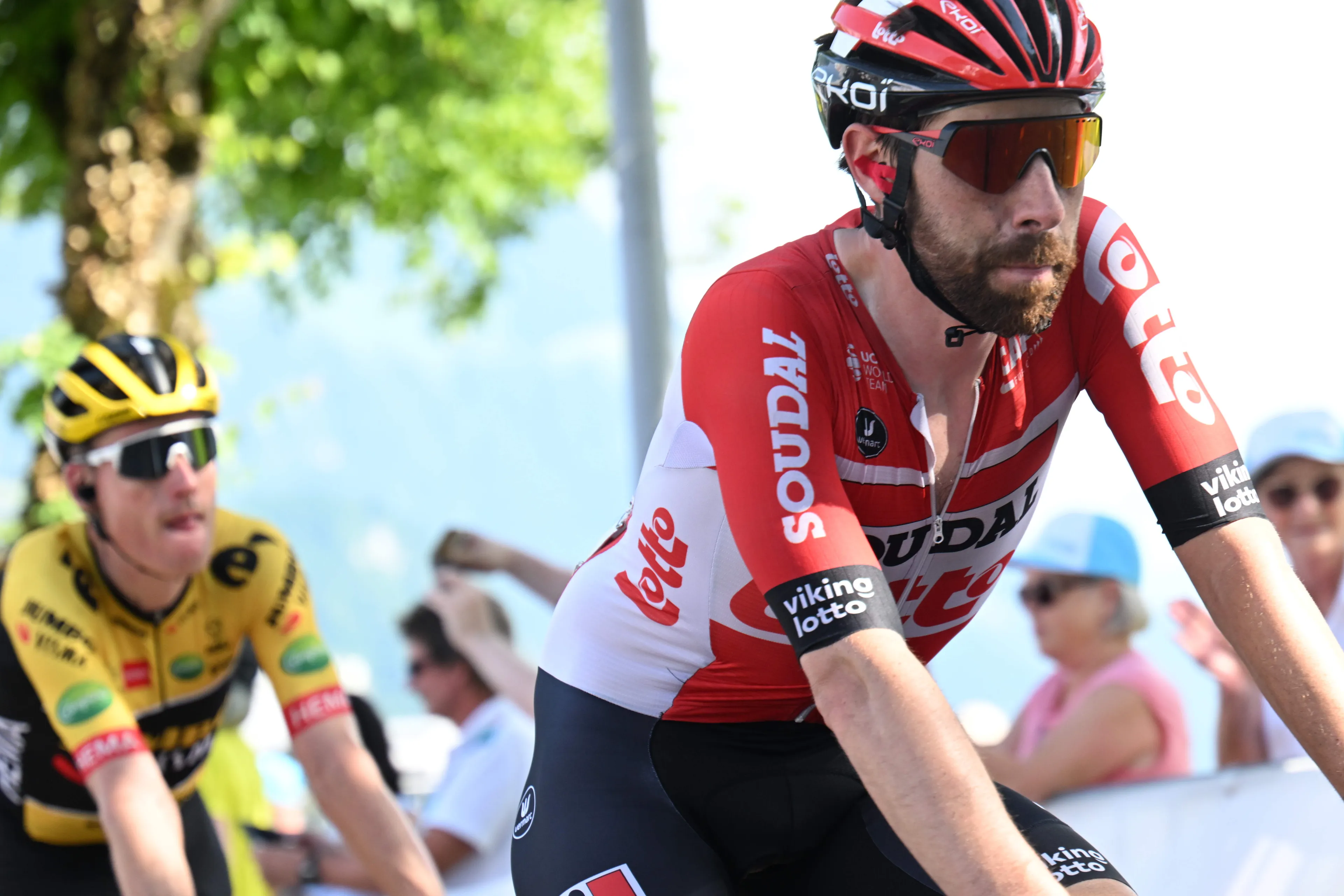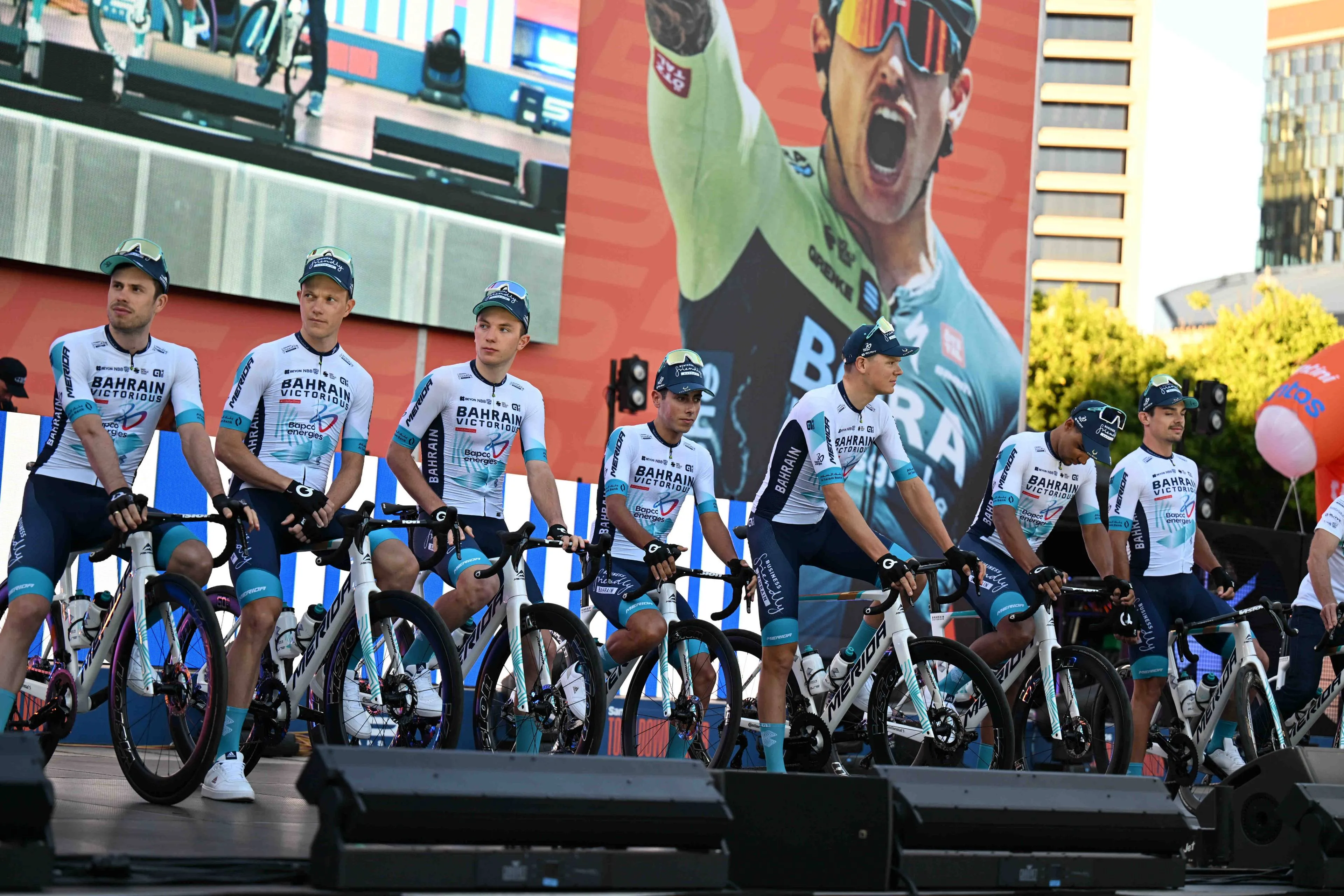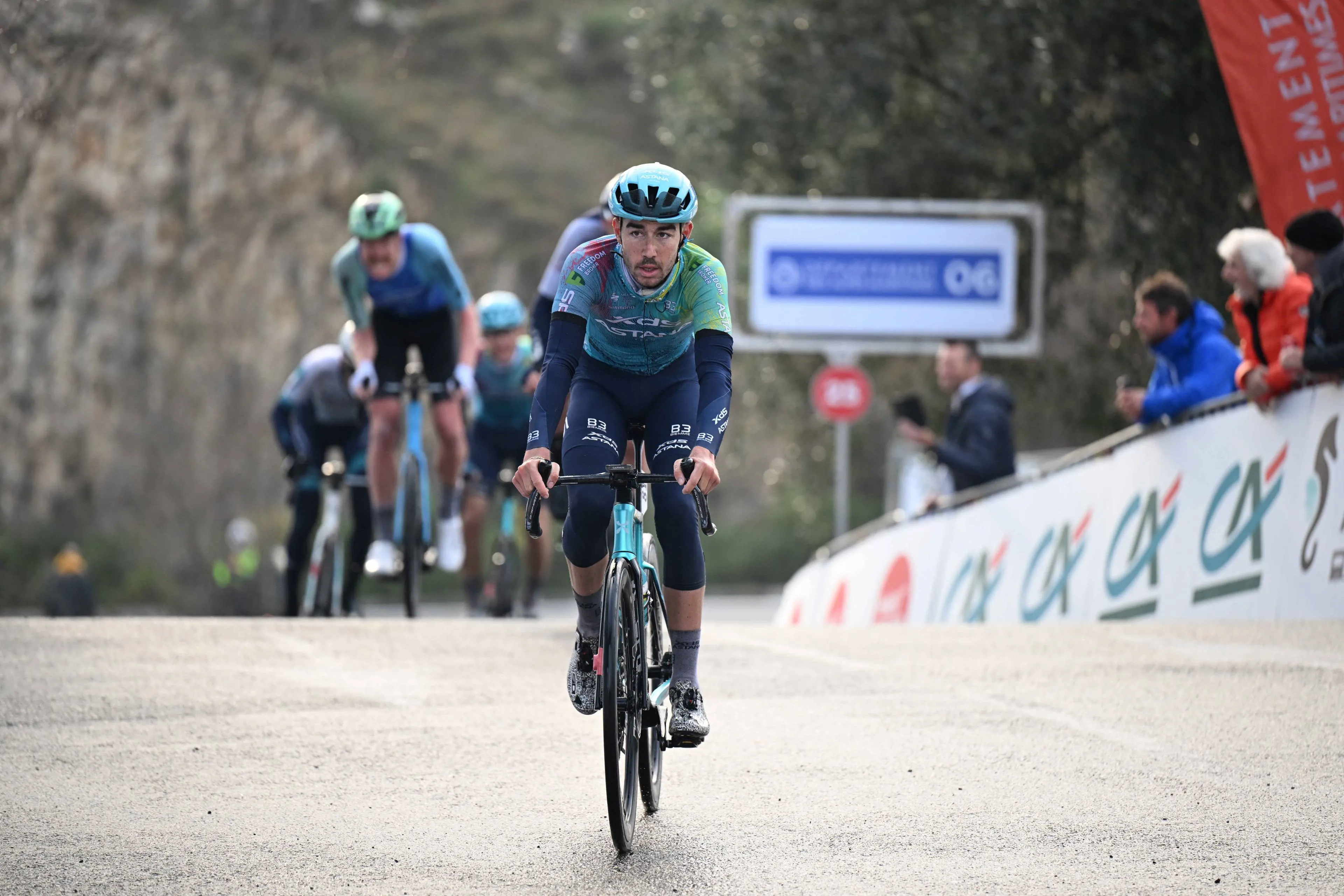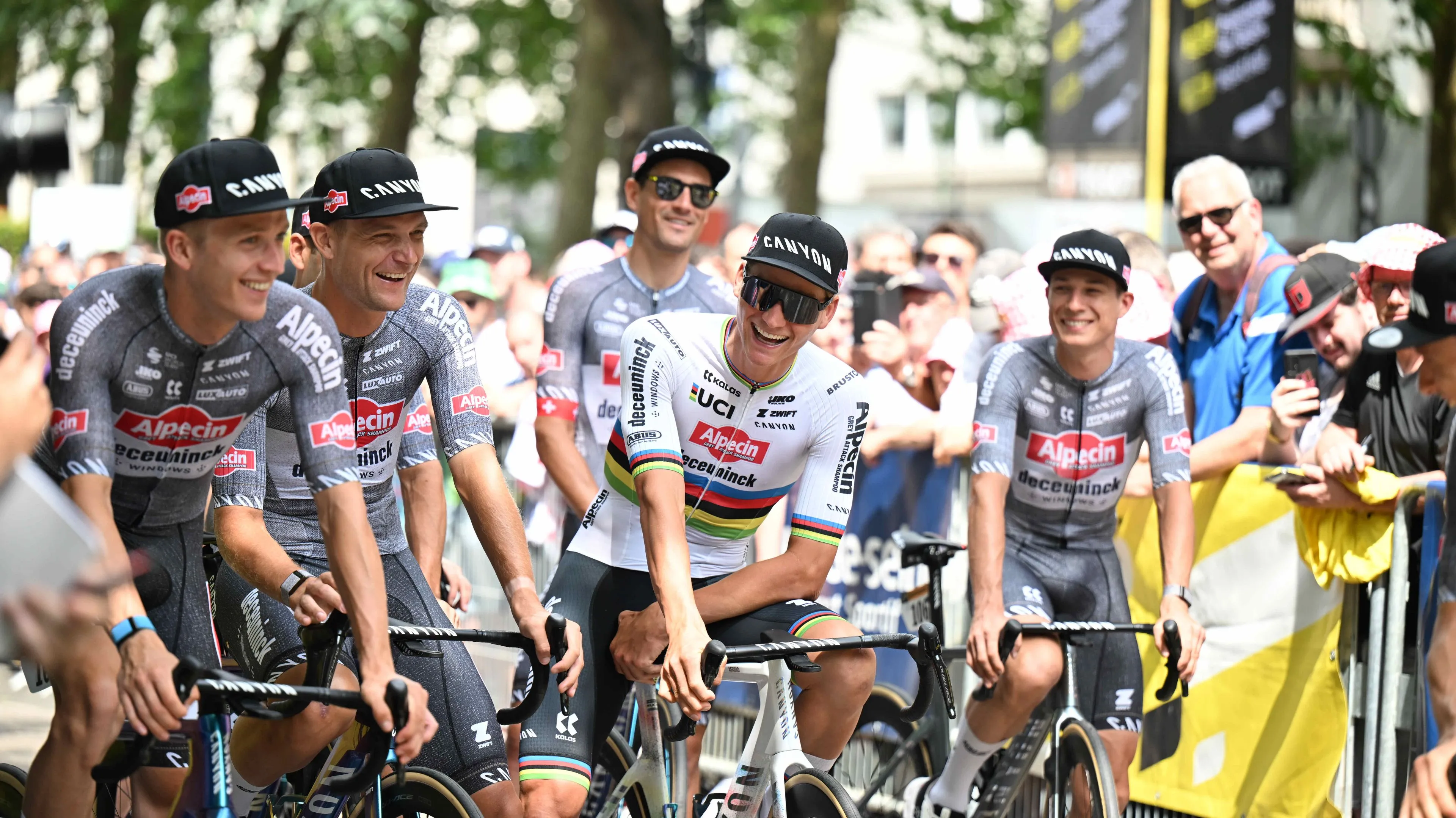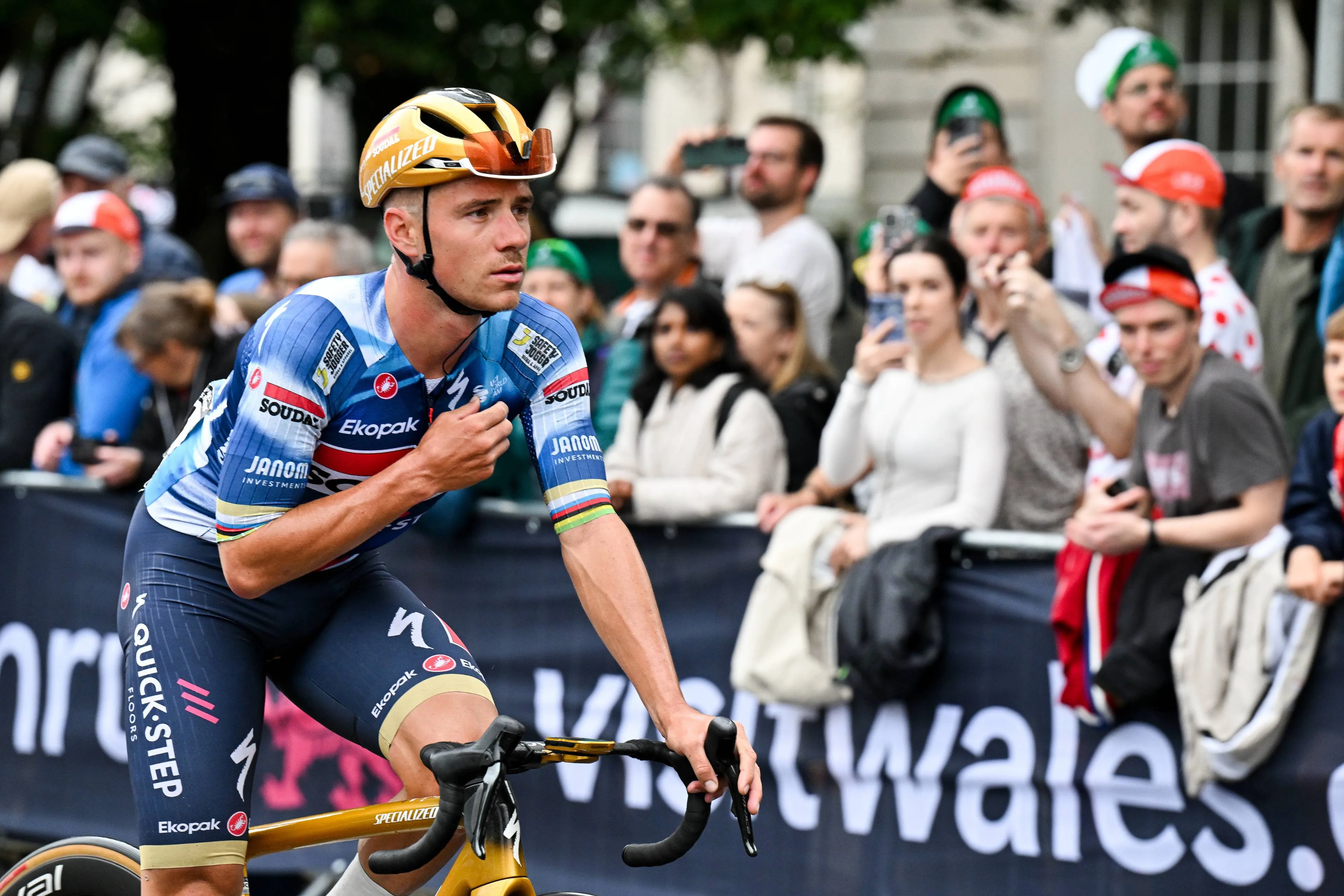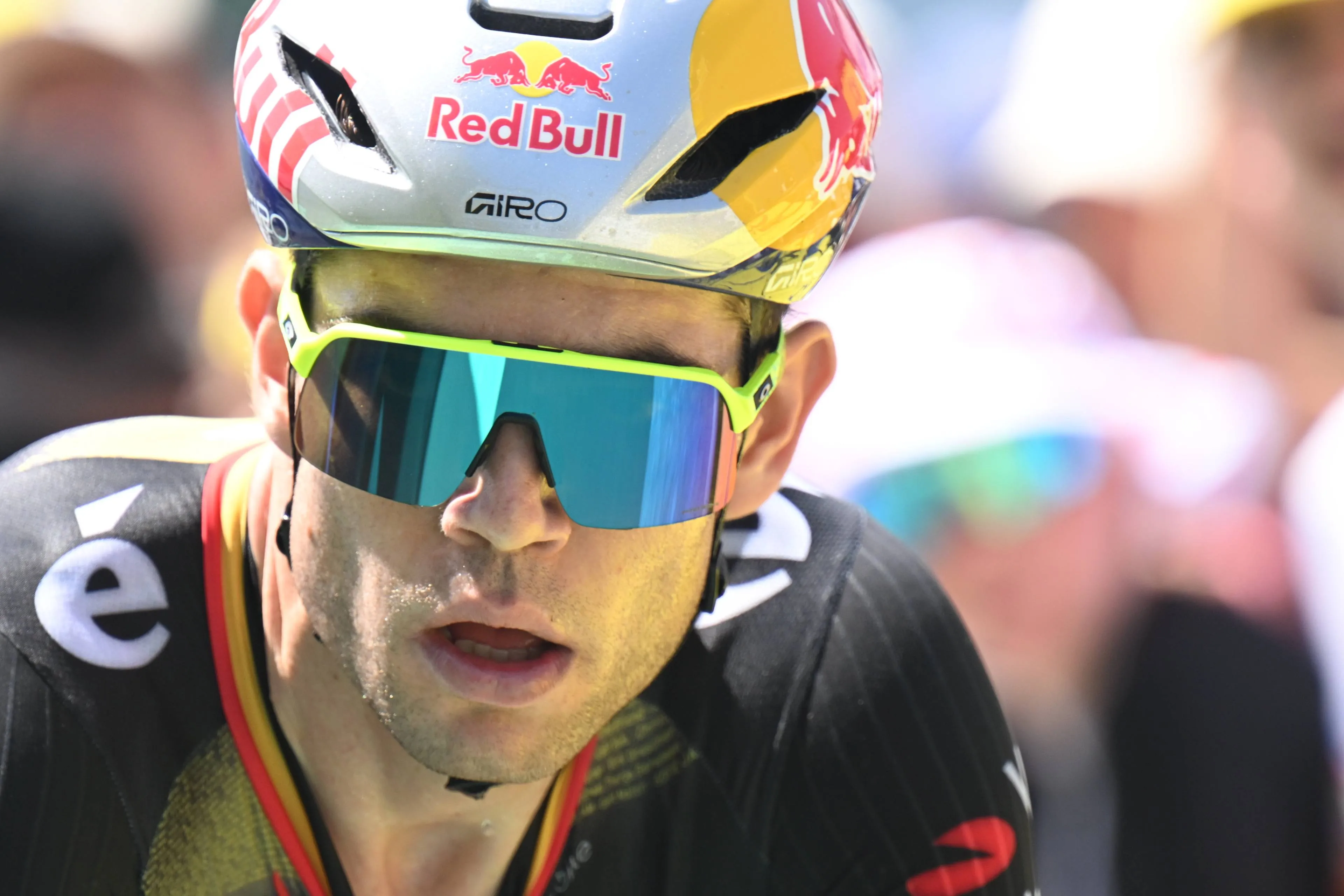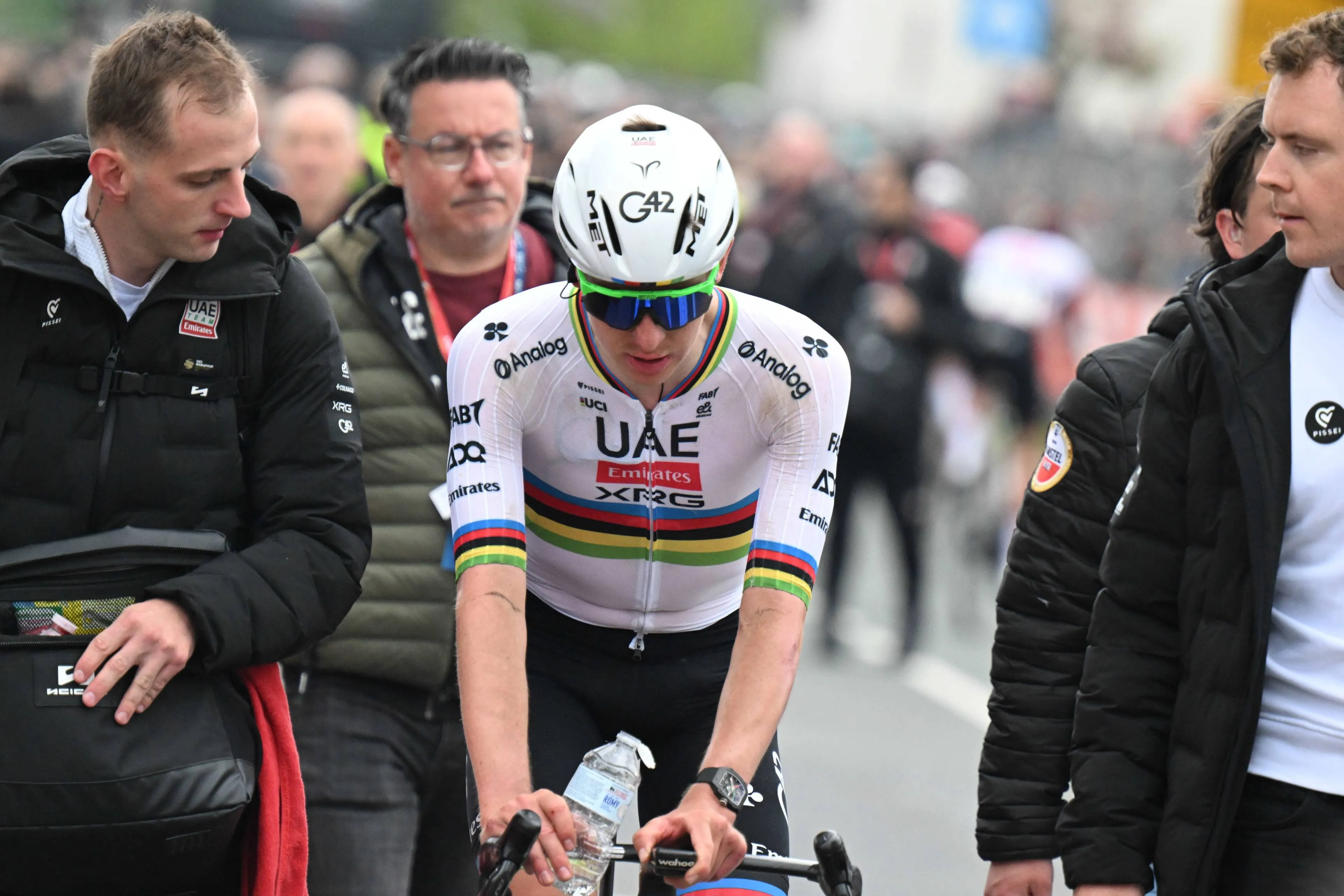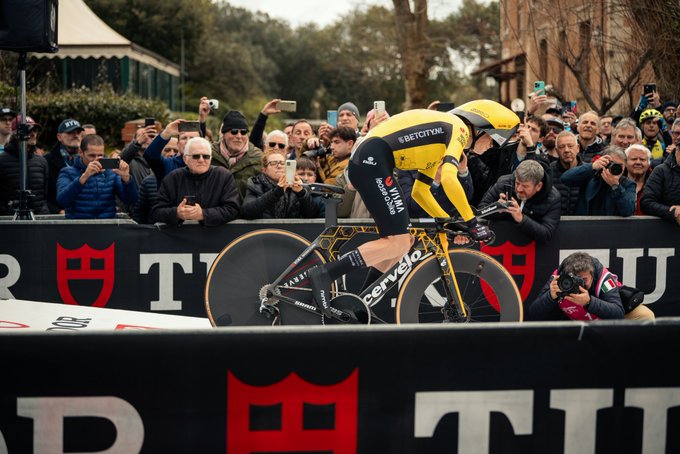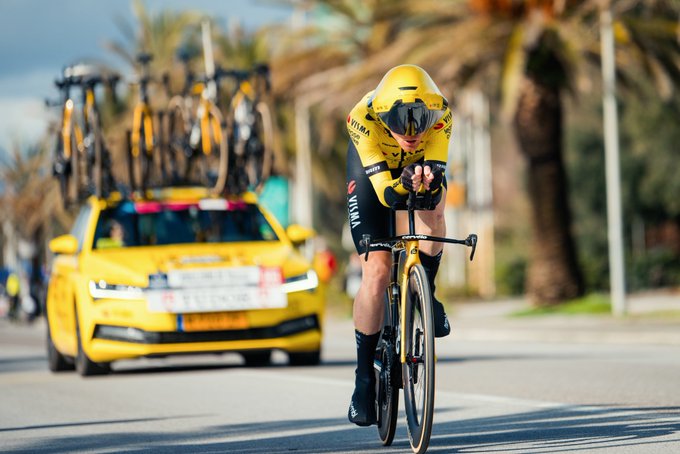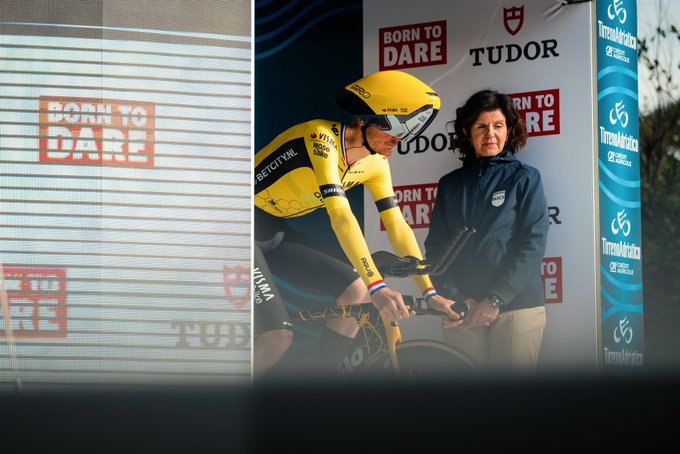Aerodynamics expert and former Visma collaborator weighs in on controversial helmet: "There is certainly great science behind it"
CyclingTuesday, 05 March 2024 at 12:30
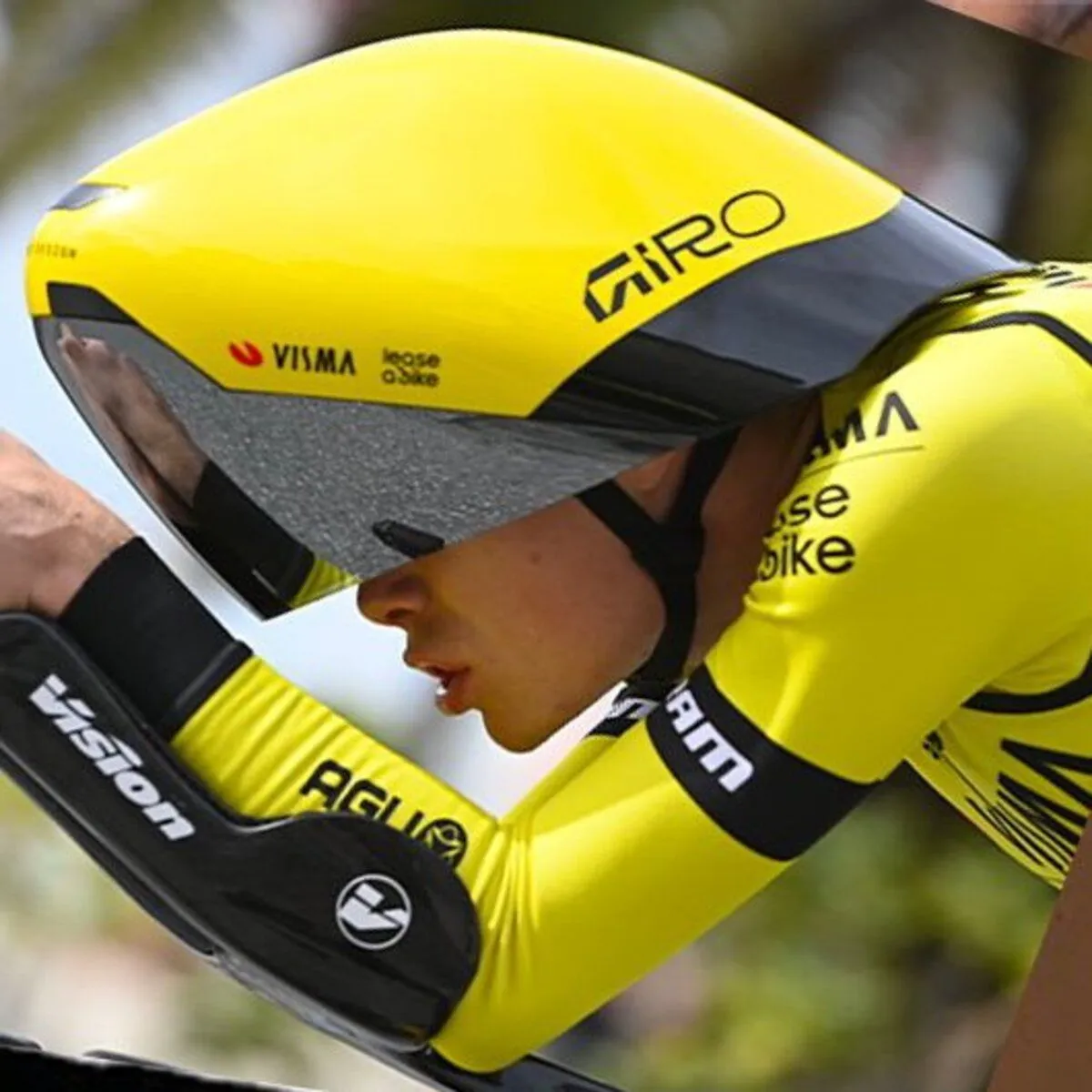
Bert Blocken is a member of the University of Leuven and aerodynamics expert, who has in the past worked with Team Visma | Lease a Bike. He has given his opinion on the surprising reveal of a new time-trial helmet that the Dutch team showed off at Tirreno-Adriatico.
“The design is, whether consciously or not, based on the helmets used in speed skiing. There they have very large helmets that cover not only the head, but also the shoulders and part of the back. The intention of these types of designs is to strive for a cocoon," Blocken told Wielerflits, who argues that this could be an efficient improvement: "But there is certainly great science behind it. It seems like a very good idea to use this technique, and I think it is clear that the Giro helmet is based on it.”
Read also
The team collaborates with figures from the speed skating world and, in another attempt to use the knowledge from other sports, has developed a new time-trial helmet that is very large and features a one-piece visor. It was a project from the Giro manufacturer. On the same day Bahrain - Victorious have also revealed a not-too-different helmet, which seems rather inspired by EF Education-EasyPost's weapon of choice against the clock.
Other teams could follow the ever-growing trend: "That could be. You have to get those helmet manufacturers on board. I think we have to wait and see what the UCI will do. If they simply allow it, I expect that other helmet manufacturers will gradually jump on board," Blocken believes, arguing there can be tangible benefit to it. "Of course it takes a lot of development time. You are not going to see that with other teams in the Tour de France. This development can easily take several years."
Read also
However ultimately, questions came forward after the team only had one rider in the Top10 - Jonas Vingegaard in 9th place, losing meaningful time to Juan Ayuso - and Cian Uitdebroeks had a very underwhelming time at the finish line. Of course, huge differences could not be expected, but it also brought the question in whether the helmet actually gave any benefit.
“Those are not tens of seconds that will be saved. But it will be significant. It is a nice step that has been taken, aerodynamically it looks good. I wouldn't be surprised if it could save three, four or five seconds in a fifteen kilometer time trial," he responds. "That order of magnitude seems realistic to me.”
Read also
claps 0visitors 0
Just in
Popular news
Latest comments
- What does he need to pay Pogi to lead him out?Veganpotter04-12-2025
- Ayuso is not a surprise if you look at his previous 5yrs.Veganpotter04-12-2025
- What do you mean?BenAflec04-12-2025
- Just making the note that it’s actually closer to 120 because most of it is consumed in the first 4 hrs, not evenly across 5 hrs up until the finish.crharnishphd04-12-2025
- WVA dropped TP and his bad knee.Cyclingnut04-12-2025
- Everyone shouts "rider x" is getting better and could beat Pogacar... Tadej is still improving year on year too.....slappers6604-12-2025
- It's not a big blow for Pogacar. Today, Pogacar relies on a close, increasingly Slovenian circle of experts. Among them, the central figure is his longtime friend Ziga Jerman, who took on the role of masseur in 2025. Jerman has known Pogačar since before his global fame, when they cycled together at the Ljubljana club Rog, so Elguezabal’s departure does not pose a threat for Pogi but rather marks the end of a very successful chapter. UAE will have to fill the gap in its professional staff, but for Pogi, this departure will not play an important role.NikkoNicco04-12-2025
- OK, enough of this BS. No one went to college or university from kindergarten. First, Remco must graduate from high school with excellent results to meet with the professor Pogacar in university and to be in same room with him. But you see, Pogi the Great also has a PhD (doctorate in cycling). In 2026, I want to see that success from Remco in high school, because I haven't seen it in these 7 years.NikkoNicco04-12-2025
- calling him a star in cross before he beats MVDP or WVA is also a big stretch.mij04-12-2025
- I think once he's the undisputed leader in a race, he can become more consistent than he was in the past.Ride197404-12-2025
Loading
🇮🇹 #TirrenoAdriatico 𝐂𝐢𝐧𝐪𝐮𝐞, 𝐪𝐮𝐚𝐭𝐭𝐫𝐨, 𝐭𝐫𝐞, 𝐝𝐮𝐞, 𝐮𝐧𝐨! 🚀
2 Comments
